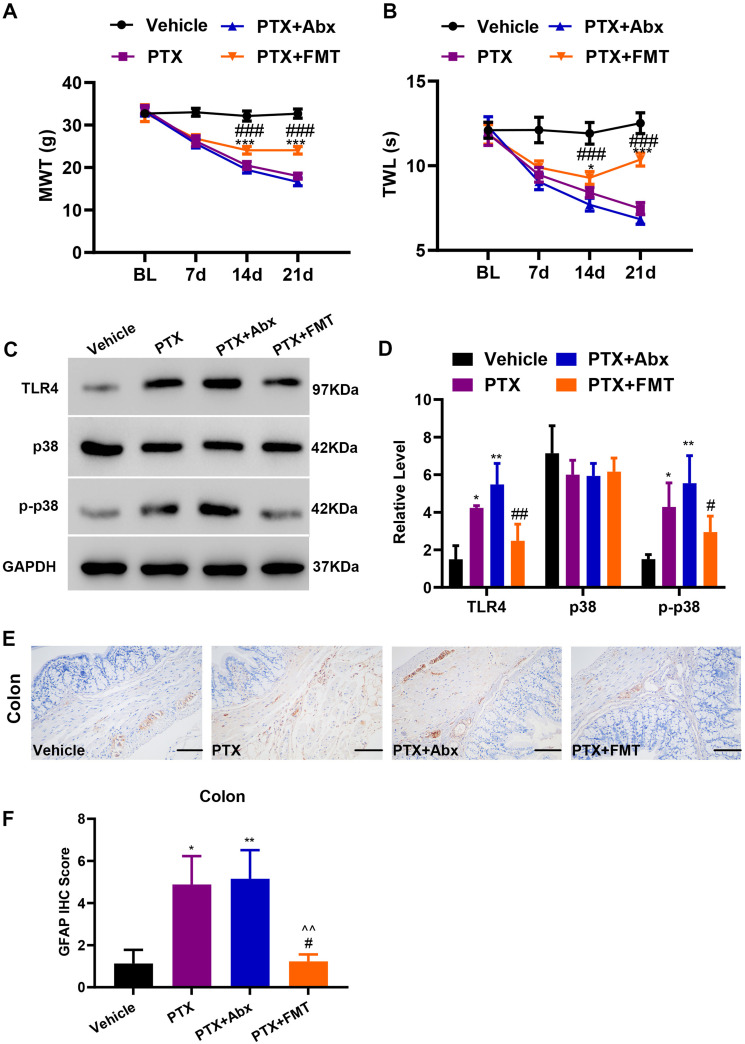Figure 2.
FMT alleviated mechanical allodynia and thermal hyperalgesia and suppressed the activation of the paclitaxel-induced pathways and astrocytes in PIPN rats. (A) The effects on mechanical allodynia in rats (Group × Time interaction: F9,80 = 62.54, p < 0.0001) (n = 6 rats per group). (B) The effects on thermal hyperalgesia in rats (Group × Time interaction: F9,80 = 32.30, p < 0.0001) (n = 6 rats per group). (C and D) Western blotting bands and analysis of TLR4, p-38, and p-p38 in the colon. F3,12 = 19.57 for TLR4, F3,12 = 1.35 for p38, F3,12 = 10.56 for p-p38. This experiment was repeated independently 4 times. (E) Photomicrographs representing glial fibrillary acidic protein immunoreactivity in each group. Scale bar = 200 μm. (F) Glial fibrillary acidic protein score. This experiment was independently repeated 3 times. Statistical comparison was performed by using two-way ANOVA followed by Bonferroni post-hoc test. Data are represented as mean ± standard deviation (SD). *p < 0.05, **p < 0.01 and ***p < 0.001 vs the Vehicle; #p < 0.05, ##p < 0.01 and ### p < 0.001 vs the PTX; ^^ p < 0.01 compared with the PTX + Abx.
Abbreviations: Abx, antibiotics; FMT, fecal microbiota transplantation; GFAP, glial fibrillary acidic protein; PTX, paclitaxel.

